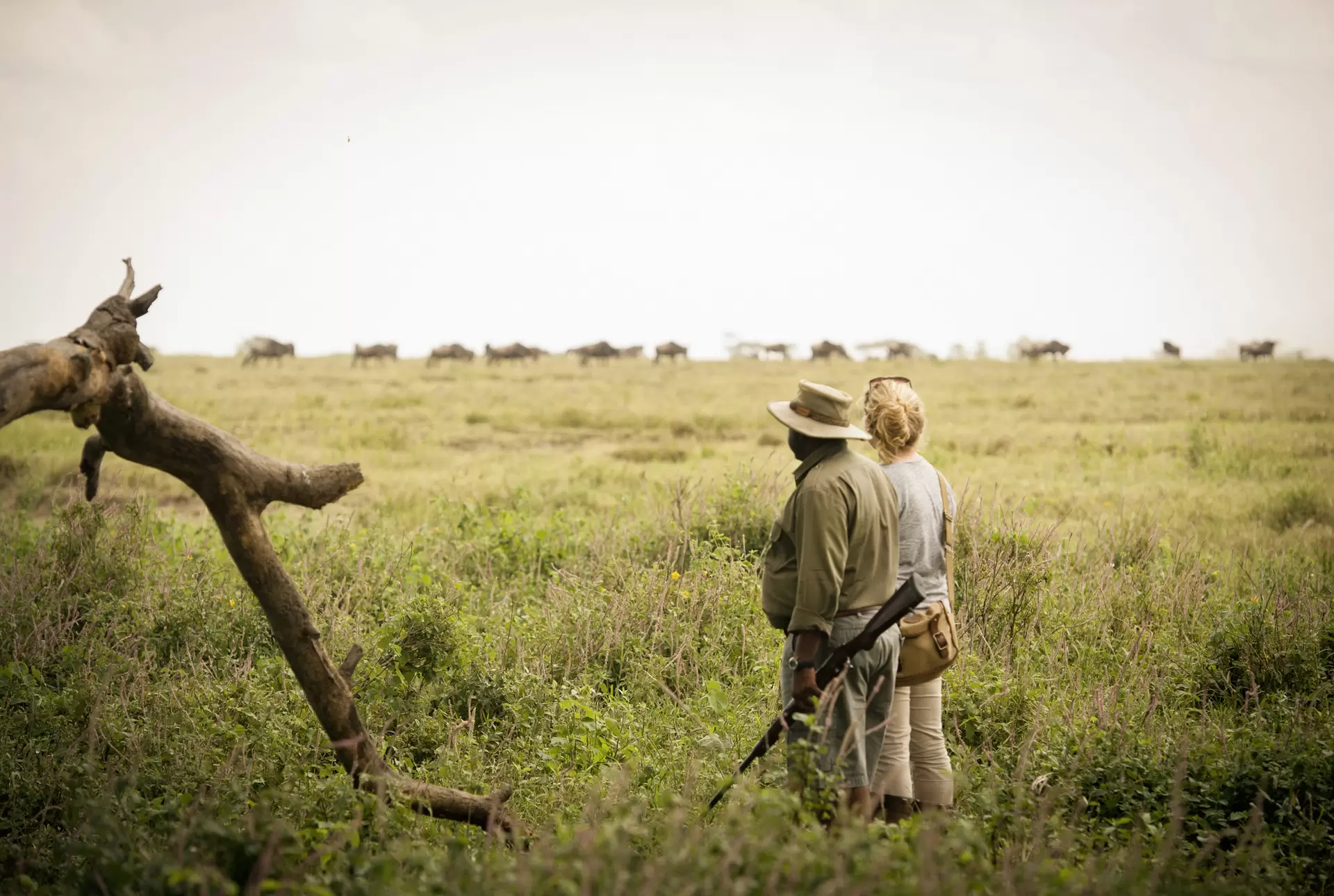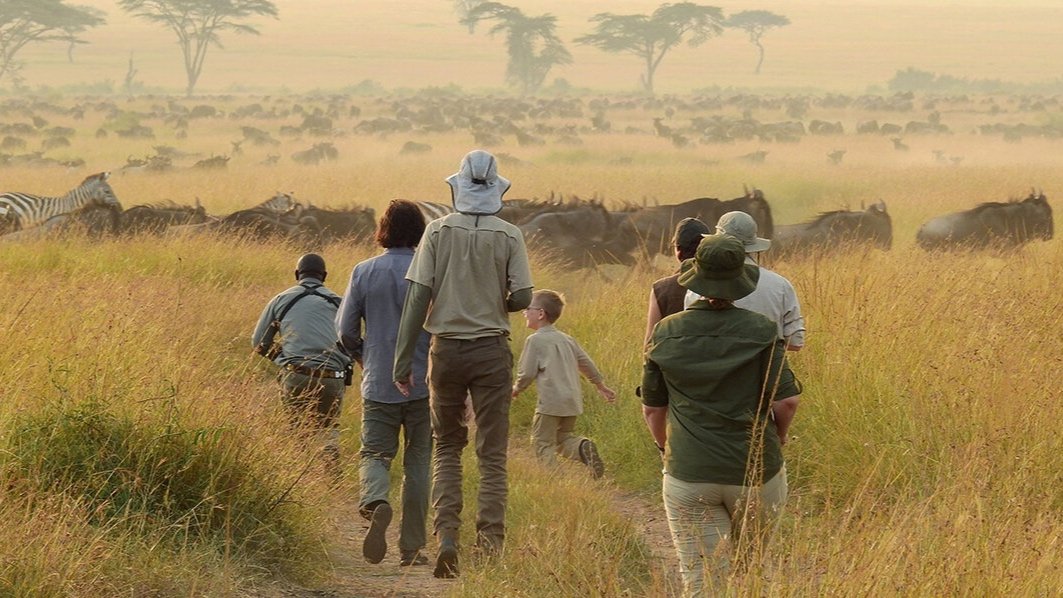info@mzimbaadventures.com
info@mzimbaadventures.com
A walking safari is typically designed to fit into your safari schedule and can be scheduled early in the morning or late afternoon when tropical temperatures are cool. Until recently, walking safaris were primarily offered in the Selous Game Reserve and Wildlife Management Areas and restricted to a few National Parks like Gombe Stream, Mahale Mountains, Rubondo Island, Udzungwa Mountains, Kitulo, Mt Kilimanjaro, and Arusha (Mt Meru), which may be extended into trekking. Today, visitors can enjoy safaris on foot in Tarangire National Park, the Ngorongoro Conservation Area including Ndutu, and within some designated locations in the Serengeti, which were previously restricted to game drives and balloon safaris only.
The walks are guided and typically accompanied by an armed ranger. A walking safari offers an excellent break from game drives, allowing visitors to learn fascinating facts about nature, birds, reptiles, insects, and the medicinal uses of local plants, which may not be fully appreciated from the seat of a safari car. While the scents and sounds of the African bush are better sensed on foot, it undoubtedly provides an adventurous and thrilling experience, especially when the walk extends into wildlife habitats where encounters with freely roaming animals are common, as in the Selous, Ngorongoro including Ndutu, and Tarangire game parks.
Walking safaris represent the purest form of safari. Walking in Tanzania is entirely different from game driving. On foot, you become a participant in the world of wildlife rather than a spectator, offering a thrilling and unbeatable safari experience.


Imagine, you walk on the same path as the elephants and other wildlife, you feel the wind through you hair, hear a lion roar in the distance and smell the bush and wildlife. Your senses awaken, as you become part of your environment and the wilderness becomes more real.